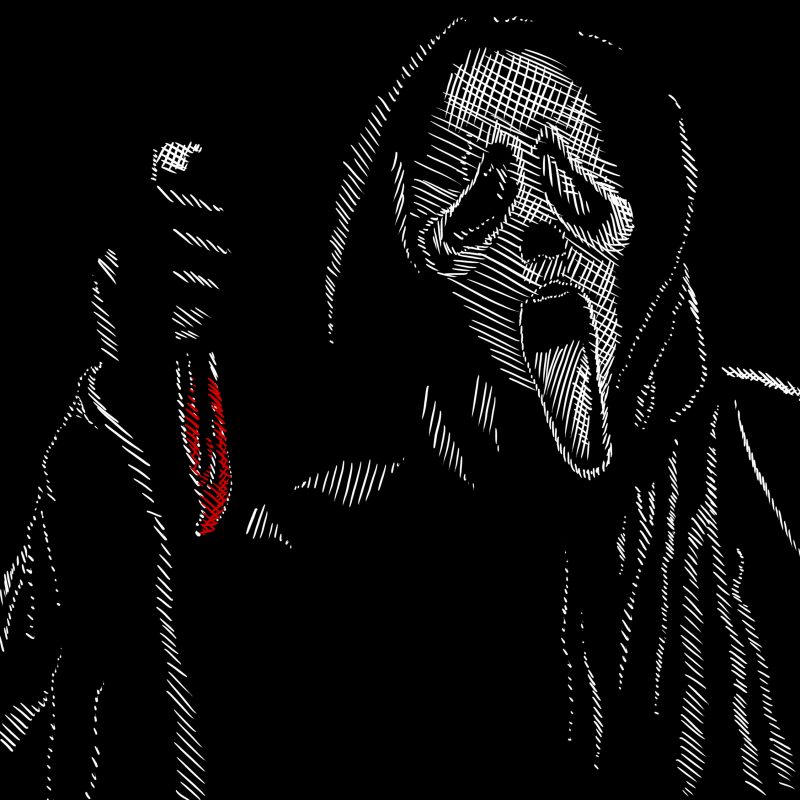by Cornelia Laing, Guest Writer
Great horror movie franchises are rarely built. There tends to be fatigue as franchises carry on and their killers, monsters, death-representers and/or memorable characters become the common association.
Pop culture and Halloween over the years bring back memories and scares for those fond of not being able to sleep. “Halloween,” “Friday the 13th,” “Nightmare on Elm Street,” “Saw,” “Alien,” “Final Destination,” “Texas Chainsaw Massacre” and “Jaws” are just some of the horror/scary movie franchises that come to mind.
With many of these franchises, you see something familiar: a great first movie with so-so films following. There is, however, one franchise that constantly delivers: “Scream.” “Scream” is so self-aware that it could be off-putting if it was not such a blast to watch.
I feel that all four films cohesively make a great franchise — not because they all fit together, but rather for their ability to surprise the audience, change tone and have one of the best final girls in horror history.
The films follow Sidney Prescott as throughout her life she is stalked by different people taking on the mask of Ghostface. She is originally targeted by the murderers of her mother. As the years go on, new people take on the persona. Sidney, Gail Weathers and Dewey are the only characters who continually survive.
In the opening scene of “Scream,” we watch for 10 minutes as teenager Casey Becker goes from making popcorn to being murdered. How it starts and ends is built on suspense, created through canted camera angles, sound design and jump scares along with a game of movie trivia — movie trivia specifically for scary movies.
There is really only one way to survive “Scream,” according to our killer(s), and that is to know how scary movies work.
This is reiterated by Randy, a video store clerk, throughout the movies as he laments about “the rules.” The rules, to be clear, are: 1) never have sex; 2) never drink or do drugs; and 3) never say “I’ll be right back.” Scream, as a franchise, is built from a filmmaker’s love for scary movies that he transfers to the characters in the film.
Wes Craven, who helmed the first “Nightmare of Elm Street,” directed all four of the “Scream” movies. In the opening of the first “Scream” movie Casey even says to the mysterious caller on the phone that the first “Nightmare on Elm Street” was scary but the rest sucked.
The film also finds time between gruesome murders to critique the ways of society. The details of Sidney’s mom’s murder and the trial of the killer are all found out because of the news on the TV.
We do not have characters spelling stuff out and we have the added benefit of believing news media is gossipy and sordid. This perception of news — and those who work for it — does bring about one of the franchise’s best characters.
Gail Weathers, played terrifically by Courteney Cox, first comes off as a hack reporter with no morals. She writes a book about Sidney’s mom’s murder and the trial of the person Sidney thought she saw commit it.
Weathers also makes Sidney realize she might have identified the wrong killer and eventually saves Sidney’s life. She develops as reporter and as a person, and her romance with Dewey is integral to many of her changes.
I love “Scream” for its commitment to appreciating the cultural capital audiences have built over the years when it comes to scary movies. Even with all the knowledge the audience has built up about the genre, Scream lets you know it knows all the cliches you do.
Randy is the character who is supposed to be the audience, discussing how the film should play out. He makes reference to horror throughout, whether it’s “The Exorcist” or scream queen Jamie Lee Curtis. In the climatic scene at Stu’s house, “Halloween” is playing on the TV as people are getting murdered.
When Sidney smashes the nearest convenient item — a TV — onto a killer, the scene from Halloween plays where Jamie Lee Curtis’s Laurie Strode also grabs the nearest convenient item — a hanger — to stab Michael Myers in the eye.
“Scream” excels as a franchise by acknowledging that the audience is scary movie intelligent. It plays a game with the audience: are your expectations right or wrong?







